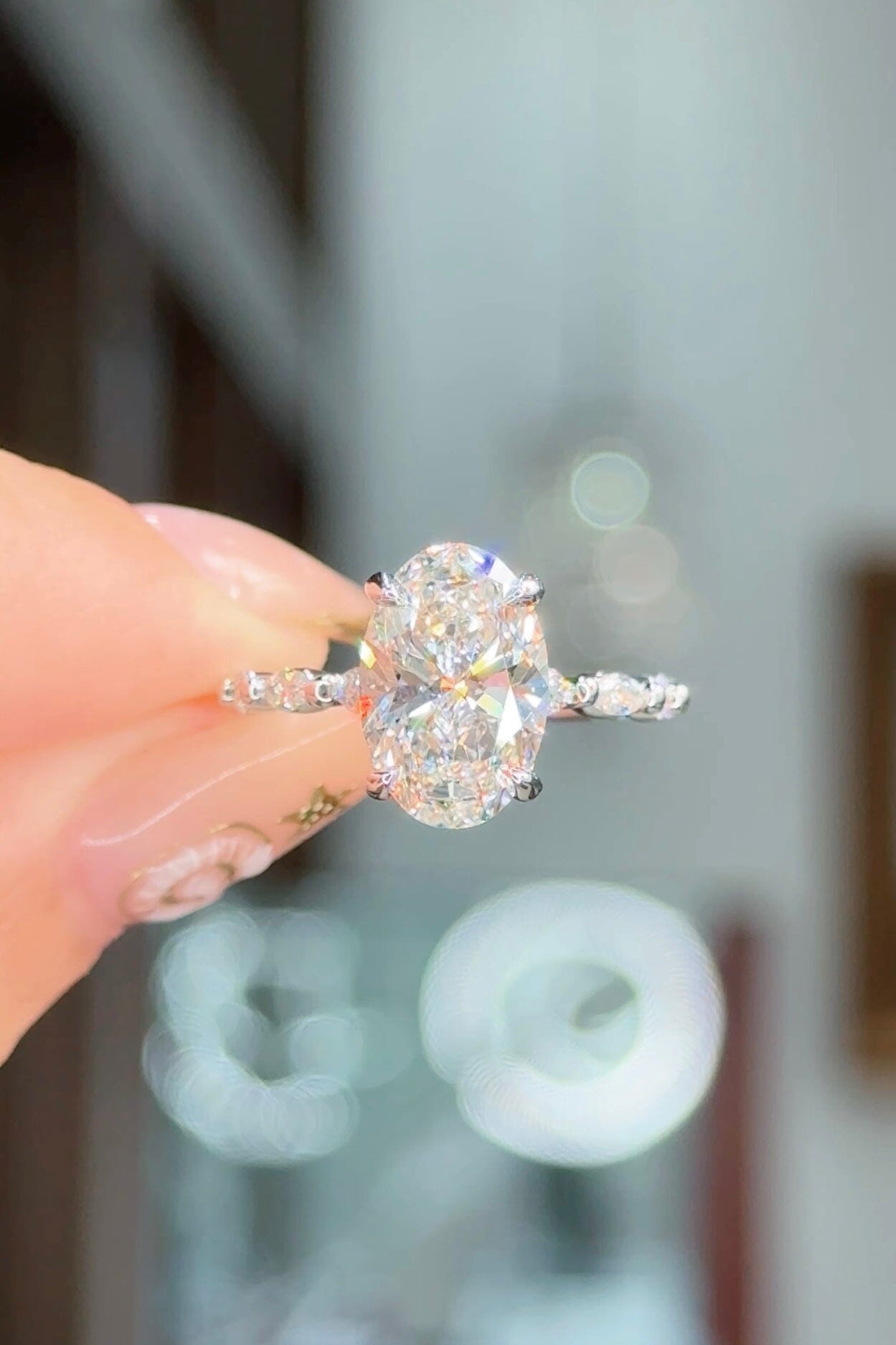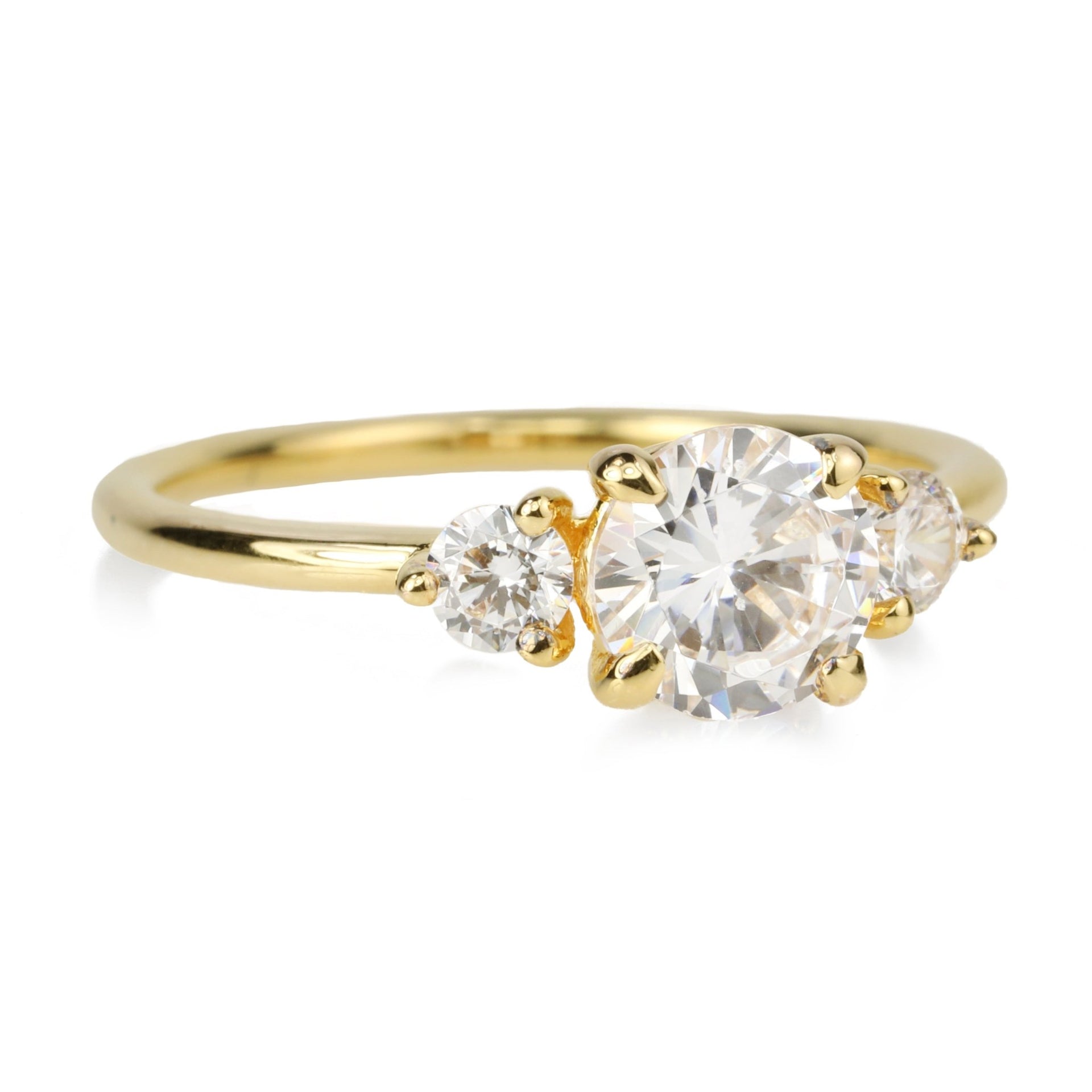lab grown diamond engagement rings vs. Mined Diamonds: Which One Wins?
Why Laboratory Grown Diamond Engagement Rings Are the Perfect Selection for Eco-Conscious Couples
Lab-grown Diamond involvement rings present a compelling alternative for couples that focus on sustainability. These diamonds supply a striking choice to conventional mined rocks, significantly lowering environmental damage. They are produced using sophisticated strategies that guarantee both quality and luster. As recognition of moral sourcing expands, lots of pairs are reevaluating their selections. What implications does this shift have for the future of the Diamond industry?

The Ecological Impact of Typical Diamond Mining
Although Diamond mining has actually long been celebrated for its attraction and reputation, the environmental repercussions of standard mining methods are progressively worrying. The extraction of diamonds frequently includes substantial land disruption, causing logging and habitat loss for many varieties. Additionally, the procedure consumes vast quantities of water, which can diminish local sources and detrimentally impact surrounding communities. Poisonous chemicals made use of in mining operations can contaminate nearby water sources, additionally threatening both human populaces and wildlife.
The carbon impact linked with delivering extracted diamonds includes to the general environmental toll. The heavy machinery and tools needed for mining operations add considerably to greenhouse gas exhausts. As awareness of these issues grows, lots of customers are starting to doubt the sustainability of standard Diamond sourcing. This shift in point of view highlights the immediate need for more eco-friendly options, such as lab-grown rubies, which assure to minimize the eco-friendly effect while keeping the beauty and value of Diamond precious jewelry.
The Process of Developing Lab-Grown Diamonds
Lab-grown diamonds are created with 2 main approaches: High Stress High Temperature (HPHT) and Chemical Vapor Deposition (CVD) The HPHT process imitates the all-natural conditions under which rubies create in the Planet's mantle. It involves subjecting carbon to extreme stress and temperature level, resulting in the formation of carbon atoms right into Diamond frameworks. On the other hand, the CVD approach permits for the development of diamonds in a regulated atmosphere. This technique makes use of a gas mix having carbon, which is invigorated to create plasma, making it possible for carbon atoms to down payment onto a substrate and grow layer by layer into Diamond crystals.
Both techniques create rubies that are chemically and physically identical to all-natural diamonds - lab grown diamond engagement rings. The choice of approach commonly depends on the preferred attributes and dimension of the final gem. This innovative method to Diamond production not just uses a lasting alternative however additionally permits better transparency in the sourcing of materials
Quality and Sparkle of Lab-Grown Diamonds
While numerous might think that lab-grown diamonds differ in top quality from their all-natural equivalents, they in fact exhibit similar radiance and aesthetic charm. Lab-grown diamonds are produced using sophisticated innovation that reproduces the natural conditions under which rubies create, leading to stones that possess identical physical and chemical properties. These diamonds achieve the very same remarkable clearness and shade grading as extracted rubies, making them identical to the nude eye.
In regards to sparkle, lab-grown rubies typically show premium light performance because of their precision-cut aspects. The strenuous quality assurance throughout production assurances that these diamonds satisfy high criteria, enhancing their visual appeal. Furthermore, they are readily available in a range of sizes and shapes, enabling pairs to discover the ideal ring to match their individual style. Ultimately, lab-grown diamonds provide a beautiful combination of beauty and quality, making them an appealing selection for engagement rings.
Ethical Factors To Consider in the Diamond Sector
As consumers come to be progressively familiar with the honest effects bordering Diamond sourcing, the conversation around the Diamond sector has actually moved markedly. Issues concerning conflict diamonds, typically described as "blood diamonds," have actually motivated ask for higher transparency and liability in mining methods. These rubies are extracted in battle zones and marketed to finance armed dispute, This Site increasing severe ethical concerns for customers. Furthermore, the ecological influence of standard Diamond mining has actually come under examination, with issues such as environment damage and water pollution regularly highlighted.
In action, many have actually transformed to lab-grown rubies as a much more ethical option. These rocks are created in controlled settings, eliminating the dangers connected with mining. Consequently, lab-grown diamonds appeal to customers looking for to make liable choices that straighten with their worths. The growing need for ethical methods proceeds to reshape the Diamond industry, promoting gentle and sustainable sourcing techniques.
Cost-Effectiveness of Lab-Grown Diamonds
Lab-grown rubies provide an engaging alternative for customers seeking affordable engagement rings - lab grown diamond engagement rings. Valued considerably less than their natural counterparts, they give superb worth for cash without compromising quality or appearance. This cost makes lab-grown diamonds an eye-catching option for budget-conscious couples
Lower Rate Point
Several couples are finding that deciding for lab-grown Diamond engagement rings can substantially decrease their overall expenses without compromising high quality or elegance. These diamonds normally cost 30% to 50% less than their mined equivalents, making them an eye-catching alternative for budget-conscious consumers. The rate advantage arises from lower production expenses and a much more reliable supply chain, which eliminates the expenses connected with mining. Therefore, couples can buy larger rocks or even more intricate setups, boosting the total aesthetic of their rings. This affordability not just allows site here for a much more individualized option yet also aligns with the worths of eco-conscious pairs that prioritize sustainability while continuing to be monetarily smart. Lab-grown rubies offer a perfect mix of style and economy.
Worth for Money
The cost-effectiveness of lab-grown rubies extends past their preliminary rate, supplying outstanding worth for money. Unlike all-natural diamonds, lab-grown choices can be up to 40% cheaper while preserving the very same physical and chemical residential properties. This price enables pairs to purchase larger or higher-quality rocks without exceeding their spending plans. The resale worth of lab-grown rubies is progressively enhancing, making them an extra feasible option for future monetary factors to consider. Additionally, lab-grown diamonds frequently feature lower ecological and honest costs, giving couples with assurance. By selecting lab-grown rubies, eco-conscious couples not just save cash but additionally add to sustainable techniques, enhancing their overall worth suggestion in the jewelry market.

Customization Options for Lab-Grown Interaction Rings
How can couples ensure their involvement ring shows their special love story? Customization alternatives for lab-grown Diamond involvement rings offer a perfect option. Couples can pick from various Diamond forms, consisting of round, princess, or oval, enabling them to pick a official statement style that reverberates with their individual visual.
In addition, they can make a decision on the setup-- be it solitaire, halo, or vintage-inspired-- ensuring the ring matches the Diamond's sparkle. Steel options, such as white gold, yellow gold, or increased gold, better boost personalization, providing to individual tastes.
In addition, pairs can incorporate meaningful inscriptions, including a sentimental touch that symbolizes their bond. With these comprehensive personalization options, lab-grown Diamond interaction rings not only embody a couple's love but likewise mirror their worths, making them an ideal option for eco-conscious collaborations. Inevitably, these rings become a true depiction of their distinct trip with each other.
Frequently Asked Questions
Exactly How Do Lab-Grown Diamonds Compare to All-natural Diamonds in Value?
Lab-grown diamonds generally set you back 20-40% less than natural rubies, supplying similar high quality and appearance. Their reduced price factor makes them an attractive alternative, especially for budget-conscious consumers looking for honest and sustainable alternatives in precious jewelry.

Are Lab-Grown Diamonds Extra Durable Than All-natural Diamonds?
Lab-grown diamonds have the same physical and chemical properties as natural rubies, consisting of resilience. Both kinds score an ideal 10 on the Mohs range, guaranteeing that lab-grown rubies are equally resistant to scraping and damages.
Can Lab-Grown Diamonds Be Resold Conveniently?
Lab-grown rubies can be resold, yet their market need varies compared to all-natural rubies. While some purchasers value their ethical beginnings, others might prefer natural alternatives, potentially impacting resale worth and convenience of transaction.
What Are the Care Recommendations for Lab-Grown Diamonds?
Lab-grown rubies call for normal care to keep their brilliance. Cleaning with light soap and cozy water, utilizing a soft brush, and staying clear of rough chemicals will help maintain their sparkle and integrity for years to find.
Are There Any Type Of Certifications for Lab-Grown Diamonds?
Lab-grown diamonds can be licensed by reputable organizations such as the Gemological Institute of America (GIA) and the International Gemological Institute (IGI) These accreditations assure top quality, credibility, and adherence to market requirements for lab-created gemstones.
Both techniques create diamonds that are chemically and physically identical to natural diamonds. Lab-grown diamonds are created making use of innovative technology that replicates the all-natural problems under which diamonds form, resulting in rocks that possess similar physical and chemical properties. Lab-grown diamonds usually cost 20-40% much less than all-natural diamonds, supplying comparable high quality and appearance. Lab-grown rubies have the same physical and chemical residential or commercial properties as natural rubies, including resilience. Lab-grown diamonds can be resold, yet their market need varies contrasted to natural rubies.